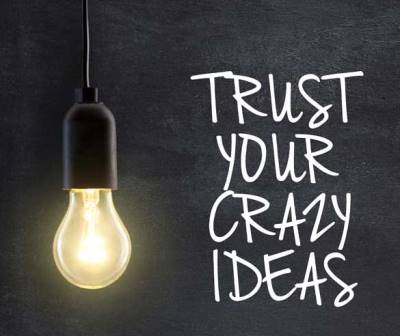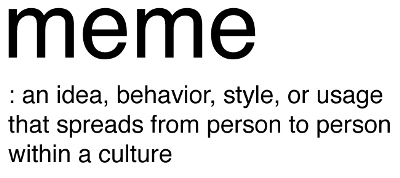Jeremie Averous's Blog, page 8
October 9, 2021
How to Improve Personal Projects
Seth Godin in his post ‘Five useful questions‘ advises us to ask some fundamental questions on our personal projects so that we address the right things and so that we don’t let us being distracted by less important stuff.
 What’s the hard part?How are you spending your time?What do you need to know?What is the scary part?Is it worth it?
What’s the hard part?How are you spending your time?What do you need to know?What is the scary part?Is it worth it?Having the right answer to those questions enables us to identify which projects are really those that will make us evolve and improve.
I like in particular the questions about the hard part and the scary part. It is those parts we will struggle to address, not necessarily because they are so hard, but because they are beyond our comfort zone and usual capabilities. Still if we want to progress we need to address those and make sure we increase our comfort zone reach. This is particularly true about getting the right data and the right interactions to reach our goals.
It is really useful to interrogate our projects with some fundamental questions about alignment and whether they will effectively lead to self-improvement.
The post How to Improve Personal Projects first appeared on The Fourth Revolution Blog.October 7, 2021
How Everything Can Be Measured Nowadays in Marketing and Beyond
In one of his newsletters, Christopher CS Penn reminds us that everything can be measured nowadays when it comes to marketing. And that if there is a lack of data, it is not because data does not exist, it is because we don’t know how to use it. In the era of digital, we have tremendous amounts of data that are just waiting to be exploited. I believe this just does not only apply to marketing – it almost applies to everything nowadays.

“I don’t believe there are things that cannot be measured. Everything can be measured. The question is whether or not we’re willing to invest the appropriate amount of time, effort, and money to measure well.”
“Let’s take brand as an example. What’s the value or strength of a brand? Brand market research has existed for decades and has proven, unimpeachable techniques for measuring the strength of the brand. For example, do a telephone poll of thousands of consumers in a representative sample and conduct unaided recall tests like “Name your favorite brand of soda to drink”.“
Thus, the important conclusion is that “The honest, ugly reality is that when someone says something can’t be measured in marketing, what they’re really saying is they’re unwilling to make the necessary investment to measure that thing. Market research, properly done, costs a lot of money – tens of thousands of dollars if you use a good market research firm. NPS data is pricey. Collecting all that data across your enterprise costs time, talent, money, and commitment.“
I believe this applies beyond marketing: nowadays if someone says something cannot be measured, it is probably because we don’t want to make the effort – or spend the money – to measure it. Data is there, or can be captured with some effort.
The post How Everything Can Be Measured Nowadays in Marketing and Beyond first appeared on The Fourth Revolution Blog.
October 5, 2021
How to Have the Right Skills and Abilities in Technical Positions
This interesting post ‘An incomplete list of skills senior engineers need, beyond coding‘ by Camille Fournier – targeted at coding engineering but more widely applicable – lists a number of skills and capabilities that are actually required beyond simple technical abilities. Of course they address a number of softer skills and human interaction capabilities.

Amongst all those skills listed I pick up my top 5 – those which based on my experience seem the most urgent to be acquired:
How to run a meeting, and no, being the person who talks the most in the meeting is not the same thing as running itHow to indulge a senior manager who wants to talk about technical stuff that they don’t really understand, without rolling your eyes or making them feel stupidHow to explain a technical concept behind closed doors to a senior person too embarrassed to openly admit that they don’t understand itHow to lead a project even though you don’t manage any of the people working on the projectHow to find interesting work on your own, instead of waiting for someone to bring it to youIn any case this reminds us that whatever the position today, even in the most technical and expert positions, sufficient abilities in soft- and interpersonal skills is required to fully participate and contribute to projects and organisations.
The post How to Have the Right Skills and Abilities in Technical Positions first appeared on The Fourth Revolution Blog.
October 2, 2021
How Commuting to Work May Have Positive Psychological Benefits
This interesting and recommended The Atlantic column ‘The Psychological Benefits of Commuting to Work‘ takes a novel view on remote work, highlighting positive aspects of actual commuting. The main effect would be to create a barrier between personal and work life, in effect a time buffer for disconnection.

“Employers—even the ones that have provided the tools for remote work—see cause for alarm. “No commute may be hurting, not helping, remote worker productivity,” a Microsoft report warned last fall. After-hours chats were up 69 percent among users of the company’s messaging platform, and workers were less engaged and more exhausted.”
Historical studies would have shown that average commuting times have always be around 60 mins per day even since roman and greek times. ““You get a very strong feeling of two lives with the train a bridge.” The distance between those two lives is explored in a body of research loosely known as “boundary theory,” and this, perhaps, is where we see the commute’s more important job.”
There are even recommendations if you are working remotely to have certain rituals which may include a short stroll to set the boundary between working time and private time.
I am personally not so sure that this border between work and private life really continues to exist as we continue to be connected all day long to work through our phones. Still it is true that the psychological effect of distance between work and family life is important at least from the geographical perspective – having a separate work space at home certainly helps.
It thus may be a good idea when working remotely to actively and consciously implement a ritual to demonstrate the switch between working and family time and ensure that this transition is clearly delineated.
The post How Commuting to Work May Have Positive Psychological Benefits first appeared on The Fourth Revolution Blog.
September 28, 2021
How to Take Delight in Uncertainty
Leo Babauta in his post ‘Delight in Uncertainty‘ explains how most people have difficulties with uncertainty in our lives, and highlights the positives associated with appreciating this uncertainty. As a recovering foe of uncertainty, this certainly resonates with me!

“We don’t like uncertainty, we want to avoid or control uncertainty, we get stressed when we can’t. And uncertainty is unavoidable: everything is uncertain all the time!“
So what can we do? First take stock that certainty is too boring: “We might instinctively dislike uncertainty, but in truth, we would be so bored without it.” Uncertainty is also the place to learn and to grow.
It is not easy to welcome uncertainty, and it does require an amount of practice. The usual corporate world generally does not provide it. Personally, I am practicing since I have started my company and I am not quite too sure who my clients and what my activity will be in 3 to 6 months! And I end up enjoying it because I know this provides space for unexpected opportunities.
Leo Babauta insists on some practices to learn to welcome uncertainty: notice the uncertainty, dance with it, set the joy in it and dance with it.
Whatever your approach, it is very satisfying to have a confident relationship with uncertainty. And yes, it takes time and practice because our Industrial Age education taught us about how to behave in a certain world. Nevertheless we can embrace uncertainty, and dance with it!
The post How to Take Delight in Uncertainty first appeared on The Fourth Revolution Blog.
September 25, 2021
How Intuitive Approaches Are Better Suited to Opening New Markets
Following up from our previous post ‘How to Recognize Crazy Innovative Ideas that Aren’t so Crazy‘, and taking a slightly different viewpoint, this article from the Conversation addresses one of the main aspects of decision-making: ‘Gut feel or rational analysis? Both may be vital in finding winning ideas for new markets‘. It summarizes some research on the processes followed by companies trying to find winning ideas to penetrate new markets. And the conclusion is clear: intuitive approaches are more powerful to uncover new markets.

Like individuals, “Some [companies] will instigate procedures that encourage more analytical decisions – for example, using formal idea evaluation tools such as grid analysis techniques and weighted point-rating evaluation matrices. Others may opt for more informal ways of evaluating ideas, which leave more room for evaluators to draw on their intuition.”
The conclusion of the research is quite clear:
Rational idea evaluators tend to seek out ideas that focus on a company’s current strengths.Intuitive evaluators focus more on identifying opportunities to enter new markets.For intuitive evaluators, a highly formalised evaluation process reduces their emphasis on finding opportunities in new markets.Hence it appears that intuitive approaches are more suited to exploring new market opportunities, and it also appears important not to introduce the rational approach too early in the process, letting intuitive approaches identify opportunities first!
The post How Intuitive Approaches Are Better Suited to Opening New Markets first appeared on The Fourth Revolution Blog.
September 23, 2021
How to Recognize Crazy Innovative Ideas that Aren’t so Crazy
In this interesting post ‘Crazy New Ideas‘, Paul Graham sets the scene about how to deal with breakthrough ideas that look crazy at first. And he proposes a workable scheme of how to deal with these, to decide whether they are worth supporting.

As a Business Angel I am constantly wrestling with this issue when faced with business plans of startup companies. “Anyone who has studied the history of ideas, and especially the history of science, knows that’s how big things start. Someone proposes an idea that sounds crazy, most people dismiss it, then it gradually takes over the world.“
The first criteria proposed by Paul Graham is how reasonable the person proposing the idea is: “If the person proposing the idea is reasonable, then they know how implausible it sounds. And yet they’re proposing it anyway. That suggests they know something you don’t.” While we then need to beware of the expert trap, there is still an opportunity to ask questions and try to understand the viewpoint of the proponent.
The second issue is that the world will resist to the new idea. Free criticism is easy and socially rewarding, vested interests in the current state of the world widespread, current paradigms cloud our judgment. In addition the new idea is weak and fragile so it may easily be crushed away.
“If you’re nice, as well as wise, you won’t merely resist attacking such people, but encourage them. Having new ideas is a lonely business. Only those who’ve tried it know how lonely. These people need your help. And if you help them, you’ll probably learn something in the process.” That’s an interesting call to action for innovation if I have ever read one.
Thus if a reasonable and sufficiently expert person proposes what looks like a crazy idea at first, don’t dismiss it: investigate, try to overcome those current paradigms that cloud your judgment, and support them.
The post How to Recognize Crazy Innovative Ideas that Aren’t so Crazy first appeared on The Fourth Revolution Blog.
September 21, 2021
How Memes are Selfish
Since the inception of the concept by Richard Dawkins in 1976, memes behaviors have been considered analog to genes in their way of reproducing and evolving. This Gapingvoid post ‘the mean meme‘ reminds us that when one wants to design memes that spread, those need to have certain characteristics. And that memes are selfish: they can spread whether they are useful or harmful.

According to Wikipedia a meme is “an idea, behavior, or style that spreads by means of imitation from person to person within a culture and often carries symbolic meaning representing a particular phenomenon or theme.”
The Gapingvoid post reminds us that “Memes, like genes, are designed to be spread. Which means they must take on characteristics most likely to ensure spreading. There is art and science to how this is done.”
Luckily the art of creating a meme is not yet infallible although many people work daily on this (advertisement agencies or book writers, for example). There is a lot of psychology involved.
Memes are necessarily tainted by culture and education, and they also may need to evolve with our knowledge and understanding of the world.
The post also reminds us that “memes, like genes, are selfish. They don’t care about us.” Bad memes can also spread if they have the right characteristics, and it is up to us to be alert to keep them under control. And there are definitely also some specialists in creating harmful memes around.
We should probably try to be better at recognizing memes and their origin, and also better analyzing if they are useful or harmful. In any case this concept leads to some fruitful consideration of what our culture is made of.
The post How Memes are Selfish first appeared on The Fourth Revolution Blog.
September 18, 2021
How We Make Maps to Leave Things Out
In this interesting post ‘The map is not the territory‘ Seth Godin reminds us powerfully that the intrinsic power of maps is that it leave things out.

Maps are representations that are always done with a particular purpose and therefore, are adapted to the intent: be it scale, features included or left out, and design aspects such as graphics and colors.
“We make a map so we can leave things out. By leaving things out, we can help people focus on the core concepts we’re trying to get across. And so, the map of the London subway is not actually the London subway. In fact, it’s not even geographically accurate. That’s okay.”
Reminding us that the power of a representation is not just what is included and how it is included, but also what is left out, is quite powerful. And this does not just applies to maps: it applies to texts, books, powerpoint presentations, and any graphical representation.
What will you purposely leave out in your next production?
The post How We Make Maps to Leave Things Out first appeared on The Fourth Revolution Blog.
September 16, 2021
How the Debate is Open About the Nature and Future of Cryptocurrency
In this interesting post ‘‘Black Swan’ author Nassim Taleb says bitcoin is an open Ponzi scheme and a failed currency‘, an interesting question is expressed about the true nature of cryptocurrencies and their future.

Cryptocurrency are highly volatile, which is an issue as to their actual usage: “you don’t replace the currency with something that’s so volatile that you can’t really commit to a transaction in it.” There is no doubt either that there is currently a lot of speculation on those cryptocurrencies, and as it becomes an increasingly public speculation with many people of all ways of life attracted to the scheme, it is certainly much overpriced and there will be a lot of disappointments in the near future.
The decisive aspect however I believe is the fact that cryptocurrencies are intrinsically difficult to control by law-enforcement and hence widely used by organized crime. This seems to be changing, and recent recovery of bounties paid in bitcoins after some hacking events, as well as increasingly stringent tax authority control, shows that it becomes much less safe as a way to hold money. However, such cryptocurrencies are not acceptable by governments in the long run because they are potentially economically destabilizing, therefore I don’t believe this will be sustainable particularly if independent cryptocurrencies volumes increase. In addition the ecological impact of cryptocurrency mining has become evident, as its impact on the semi-conductor market: cryptocurrencies don’t scale beyond a certain size without difficulties.
All in all, while government-backed electronic currencies will certainly emerge in the future, I am much less optimistic about the scalability and acceptability of really independent cryptocurrencies, and I believe that the current fashion may not last long. We’ll see what the future holds!
The post How the Debate is Open About the Nature and Future of Cryptocurrency first appeared on The Fourth Revolution Blog.



